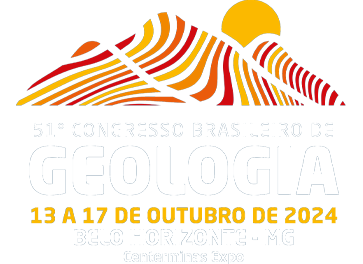Dados da Submissão
Título
Characterization and Development of U-Pb Dating Standards in Apatites Using LA-ICP-MS Technique: Applications in Rocks from the Ribeira Orogen
Texto do resumo
The project titled "Characterization and Development of U-Pb Dating Standards in Apatites Using LA-ICP-MS Technique: Applications in Rocks from the Ribeira Orogen" by Costa, Passarelli, Siqueira, de Souza, and Basei from the Instituto de Geociências, Universidade de São Paulo (USP), focuses on the optimization of U-Th-Pb dating in apatite minerals using the LA-ICP-MS technique.
The LA-ICP-MS (Laser Ablation Inductively Coupled Plasma Mass Spectrometry) technique represents a significant advancement in isotopic and trace element analysis. It involves the use of laser ablation to vaporize the sample, which is then ionized in a plasma and analyzed by mass spectrometry, providing precise elemental and isotopic data. This method is recognized for its high sensitivity, precision, and non-destructive nature, making it suitable for various applications, including geological, environmental, and forensic studies.
The primary goal of this research is to overcome challenges related to instrumental variability and calibration accuracy in U-Th-Pb dating of apatite. The project aims to establish reliable calibration standards by evaluating different apatite reference materials: Kovdor (Russia), MAD1 and MAD2 (Madagascar), and Wilberforce (Canada). This initiative also aims to enhance the geochronological understanding of the Ribeira Orogen (RO) to better comprehend its tectonothermal evolution.
The study involves evaluating several candidate apatite standards for their suitability in U-Th-Pb dating and testing different reference materials, including Durango apatite, Mud Tank, Kovdor, Madagascar samples, and Wilberforce apatite. Each standard was assessed for U and Pb content, homogeneity, and the presence of common Pb.
The results showed that Durango apatite was too young for the study’s requirements (31.44 ± 0.18 Ma), while Mud Tank contained excessive common Pb, making it unsuitable. Kovdor apatite, despite suitable U and Pb content, exhibited heterogeneity (377.5 ± 3.5 Ma). Madagascar samples provided discordant ages (486.58 ± 0.85 Ma and 474.75 ± 0.41 Ma). However, Wilberforce apatite demonstrated homogeneity and absence of inclusions, making it a reliable secondary standard (approximately 900 Ma). Wilberforce apatite, after correcting for common Pb using NIST-612 as the primary standard, was established as a reliable secondary standard for dating apatites from the Ribeira Orogen.
This study underscores the importance of meticulous standard selection in precision geochronological studies. The identification of promising apatite standards such as Wilberforce, Kovdor, and Madagascar is crucial for enhancing calibration accuracy. These advancements are essential for understanding the tectonothermal evolution of the Ribeira Orogen in southeastern Brazil.
Ongoing analyses are vital to refining calibration protocols and addressing challenges related to instrumental variability. The project aims to enhance methodological robustness and data accuracy, thereby improving the reliability of U-Th-Pb dating in apatite. Understanding the U-Pb system in apatite, which may be affected by ductile shearing at medium temperatures, is crucial for identifying the end of major shear zone movements and subsequent thermal events impacting the granitic bodies in the region.
Palavras Chave
apatite; LAICPMS; Standard; U-Th-Pb;
Área
TEMA 18 - Geocronologia e Geoquímica Isotópica
Autores/Proponentes
Marcos Henrique Costa, Claudia Regina Passarelli, Roberto Siqueira
